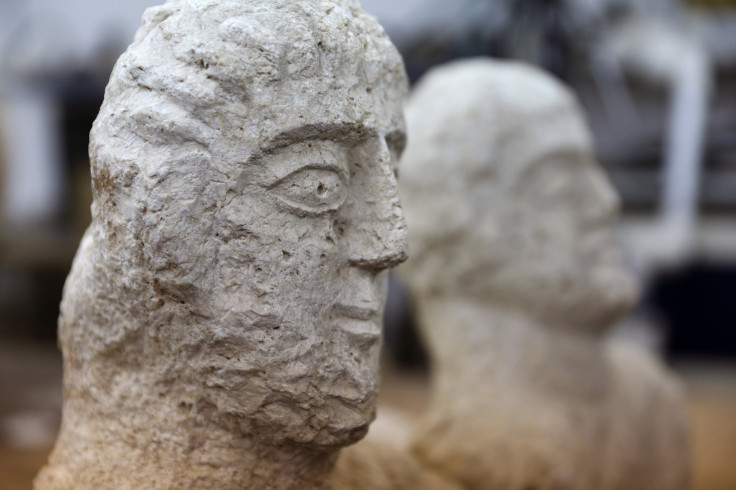11,000-Year-Old Carving Of Man Holding Penis Might Be The Oldest Narrative Carving [Photos]

Archaeologists have discovered an 11,000-year-old scene carved into a wall at a site in Turkey and it could be the world's oldest narrative depiction. In the carving, a man is seen holding his penis.
A team of researchers found 2 separate depictions adjacent to each other at the site of Sayburç in south-eastern Turkey. The results of the study were published in the journal Antiquity.
A common theme of people confronting dangerous animals runs through the two panels that were discovered. In one, a man can be seen holding his phallus while being flanked by two leopards. In the other one, a squatting man can be seen holding a rattle or snake while facing a bull.
What sets the Sayburç images apart from the other similar carvings found in the region is that these images are related to each other. The two panels depicting the narrative are horizontally adjacent to one another. This creates a continued scene.
"These figures, engraved together to depict a narrative, are the first known examples of such a holistic scene," archaeologist Dr. Eylem Özdoğan, from Istanbul University said, reported PhysOrg. "This was a picture of the stories that formed the ideology of the people of that period."
The carving was unearthed during excavations that began in 2021 at the Sayburç site, which is located beneath a modern village in the Şanlıurfa Province of Turkey.
The site was said to be active during the Neolithic, in the 9th millennium BC. This period marked the lifestyle transition from mobile hunter-gathering to farming and settling down like in Sayburç.
Other findings at the site include some residential buildings and a large communal structure. The communal structure was of particular importance archaeologically. It had benches lining the walls and may have been a place for special gatherings, according to the researchers. It was in the backrests of some of these benches that the narrative images were found.
"This building has all the characteristic features of the communal structures in the region. In this structure, as in other similar ones, animal and human images were found. However, here the characteristic figures of the period coexist and form a scene," Dr. Özdoğan was quoted as saying by the outlet.
Dr. Özdoğan believes that the characters in the narrative scenes were important figures for the early farming community. They might even have been historical characters or mythical figures that were part of the community's culture.
"Archaeological evidence can provide some insight into the traditions of past societies but clearer evidence rarely survives, so this discovery is exciting," Dr. Özdoğan said, adding, "Sayburç has very clear evidence in this respect and has the potential to tell us a lot about the Neolithic society that we do not know, yet."
There may be many more discoveries in the future at the Sayburç site since the communal building has only been partially excavated till now.





















